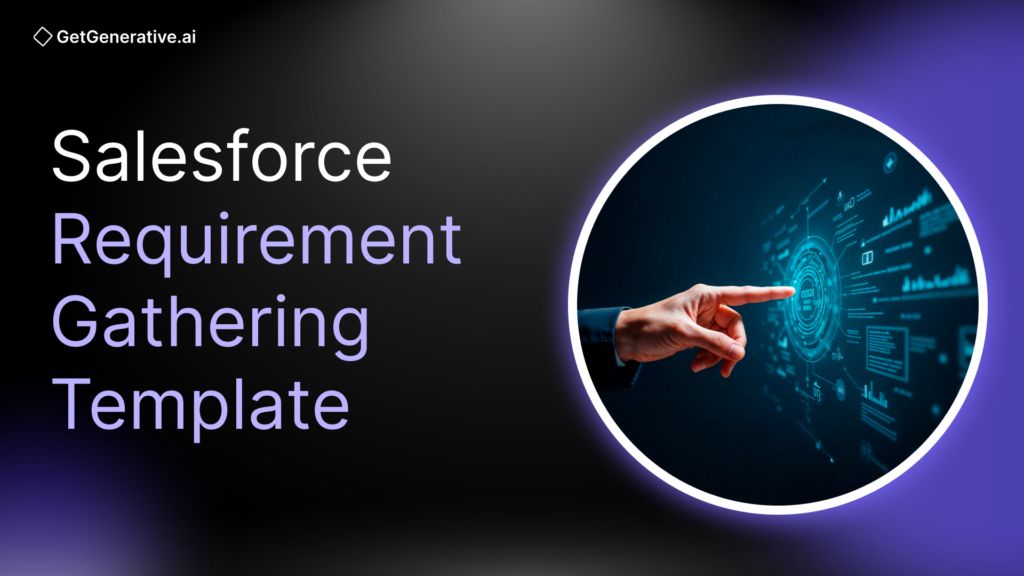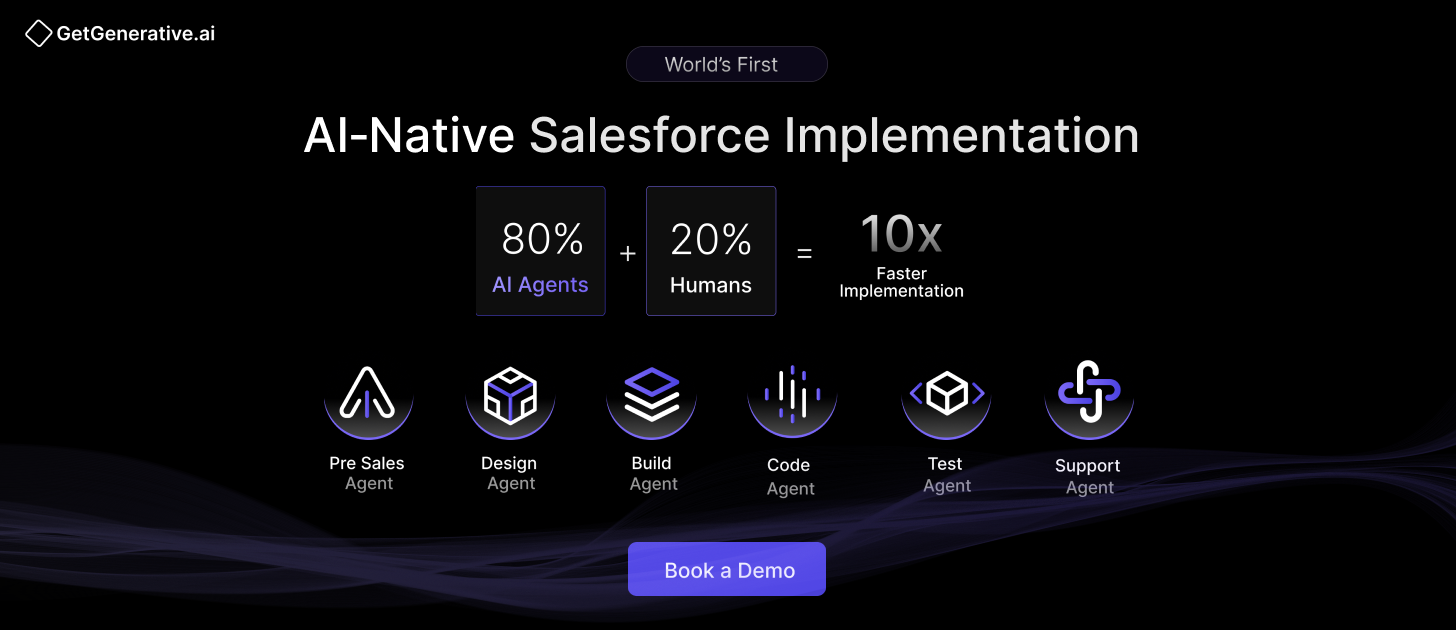Salesforce Requirement Gathering Template
Requirement gathering isn’t just a preliminary checkbox in the Salesforce implementation process — it’s the defining factor for project success. According to industry research, over 70% of failed projects stem from poorly gathered requirements (Contentsnare). When done right, structured requirement gathering can reduce scope creep, enhance user adoption, and ensure solutions are aligned with business goals.
In Salesforce projects, the flexibility and depth of the platform make it especially important to standardize how requirements are collected. A comprehensive, well-crafted requirement-gathering template serves as a shared blueprint between stakeholders and consultants. It captures not just what needs to be built, but why — ensuring that the final solution delivers measurable value.
“The discovery phase can make or break a project.” — Salesforce Consultant, CloudAlly
This guide provides a fully detailed walkthrough of what a Salesforce requirement gathering template should include, best practices to follow and common pitfalls to avoid. Let’s get started!
Key Components of a Salesforce Requirement Gathering Template
1. Project Overview and Scope
This section lays the foundation for the implementation. It ensures alignment among all stakeholders by documenting the business context, expectations, and boundaries upfront.
Key Elements to Capture:
Project Name & Description:
E.g., “Sales Cloud implementation for global lead-to-cash process.”Business Objectives & Outcomes:
Define measurable goals.
E.g., “Increase lead conversion rate by 20% over 12 months.”Scope & Deliverables:
Clarify what’s in scope (and out). Specify Salesforce Clouds, features, integrations, and exclusions.Timeline & Milestones:
High-level phases like Discovery, Build, UAT, Go-Live.Key Stakeholders:
Names, roles, and departments — brief for context.
Example Insight: A project to streamline sales operations might appear simple, but if one stakeholder thinks it’s about improving conversions and another believes it’s about enhancing customer service — misalignment can derail everything. Clarifying the objective upfront avoids conflicting expectations later.
2. Stakeholder and User Information
Engaging the right people from the start is critical. Each persona brings unique needs that shape the solution’s effectiveness.
What to Document:
Stakeholder Names & Roles: Include business sponsors, department leads, IT heads, power users.
Contact Details: For follow-ups and clarification.
User Personas & Teams: Identify who will use Salesforce (e.g., sales reps, managers, service agents, finance).
✅ Best Practice: Ensure cross-department representation. For instance, at a retail company (“Frank Wallets”), consultants involved the CEO, Sales Manager, Support Head, and IT Manager — ensuring all perspectives were addressed in the requirement set.
⚠️ Pitfall to Avoid: Leaving out end users. This often leads to low adoption rates — people won’t use a system built without their input.
3. Current State Analysis (Systems and Processes)
Before mapping the future, understand the present. Document the “as-is” processes, tools, and pain points that exist in the organization.
Template Sections:
Existing Tools/Systems:
CRMs, spreadsheets, databases, ticketing systems, email tools.
E.g., “Sales managed in Excel; support via legacy ticketing tool.”Process Workflows:
Map out lead flow, case handling, or approval chains. Use flowcharts or simple step lists.User Pain Points:
Gather specifics.
E.g., “Sales reps drop follow-ups due to lack of alerts”; “Agents can’t access customer history.”Data Volume & Quality:
Note estimated record counts, duplication issues, or data gaps.
💡 Consultant Tip: Don’t just document — challenge assumptions. Ask “Why do you do it that way?” and look for inefficiencies that Salesforce can fix.
🧠 Real-World Case: A nonprofit once listed “cases from website” as a requirement. Only after mapping their current process did they uncover that agents manually searched emails for updates — leading to a more meaningful feature: automatic case updates and history tracking.
Also Read – Salesforce Discovery Workshop – Questionnaire
4. Business Process Needs and Personas (Future State)
This section translates business goals into functional requirements. Think of it as the “to-be” model — how the organization wants Salesforce to support and enhance their operations.
What to Include:
Target Process Flows (To-Be):
Define the ideal process inside Salesforce. For Sales Cloud, this might be:
Lead → Qualification → Opportunity → Quote → Close.
For Service Cloud:
Case Created → Triage → Escalation → Resolution → Closure.User Stories or Use Cases:
Capture needs in a relatable, user-focused format.
E.g., “As a support agent, I want to merge duplicate contacts to view a customer’s full history.”Persona-Specific Requirements:
Different users, different needs.Sales Rep: Log calls, create opportunities
Sales Manager: Pipeline dashboards, forecast view
Support Agent: Case history, quick templates
Support Manager: SLA tracking, queue management
💬 Expert Insight: Vague inputs like “We want better lead tracking” often miss the mark. A more actionable version is:
“Implement lead scoring with alerts for hot leads and a report showing conversion by source.”
🔁 Why It Matters: Functional clarity now prevents scope creep and mismatched expectations later. Each process step should be mappable to a user action in Salesforce.
5. Key Performance Indicators (KPIs) and Success Metrics
To ensure alignment with business goals, define what success looks like numerically.
Capture the Following:
Current Baselines & Desired Targets:
E.g., “Lead conversion rate: current = 10%, target = 20% in 12 months.”KPI Examples by Cloud:
Sales Cloud: Win rate, average deal size, sales cycle length
Service Cloud: First contact resolution, CSAT, average case age
Marketing Cloud: Open rate, conversion per campaign, unsubscribes
Success Criteria:
Clarify how the client will evaluate if Salesforce is “working.” Ask:
“If these KPIs improve, would that mean success to you?”
📊 Value Add: When stakeholders agree on success metrics early, it keeps implementation focused. It also allows post-launch ROI reporting — a powerful way to validate the project’s impact.
6. Security, Access, and Compliance Requirements
This section ensures your Salesforce setup respects organizational hierarchy, user roles, and regulatory compliance.
Details to Include:
Role Hierarchy & Visibility:
Define access layers.
E.g., “Regional sales managers should not see each other’s pipelines.”Profiles & Permissions:
Note any restrictions like read-only access or field-level security.
E.g., “Restrict access to salary data; encrypt PII fields.”Approval Processes:
Map workflows requiring sign-offs.
E.g., “Discounts over 20% need VP approval; refund requests over $100 need finance approval.”Compliance Needs:
If GDPR, HIPAA, or finance laws apply, capture requirements for:Data retention
Access logging
Consent tracking
Secure sharing
Authentication & SSO:
Note if the client uses identity providers like Okta or Azure AD.
E.g., “Enable SSO for all users with multi-factor authentication.”
🛡️ Why This Is Critical: In one project, a missed requirement around opportunity visibility led to a rebuild of sharing rules late in the project. Documenting security needs early avoids surprises.
7. Data Migration and Integration Requirements
Migrating old data and connecting external systems are two of the most underestimated components of any Salesforce project.
What to Document:
Migration Scope & Sources:
E.g., “Import 100,000 contacts and 5 years of opportunity data from HubSpot.”Data Cleansing Needs:
Any cleanup before import?
E.g., “Remove duplicates, standardize phone number formats.”Integration Points:
List all systems that will connect to Salesforce. For each, define:Source and destination
Direction (one-way or bi-directional)
Frequency (real-time, hourly, daily)
Examples:
“Sync closed deals with SAP for invoicing”
“Pull customer loyalty data into Marketing Cloud for segmentation”
Transformation Rules:
E.g., “Concatenate First Name and Last Name into Full Name field on import.”Data Governance & Ownership:
Define who owns what.
E.g., “Sales owns contact updates; marketing owns campaign data.”
Also Read – Salesforce RFP Template: A Comprehensive Guide
8. Reporting and Analytics Requirements
Salesforce’s value lies in its ability to turn data into decisions. That starts with knowing what insights stakeholders expect.
What to Capture:
Reports Needed:
E.g., “Pipeline by stage and rep,” “CSAT by support agent,” “Campaign ROI by source.”
Define the metrics and intended users for each.Dashboard Expectations:
E.g., “Sales Manager Dashboard with monthly sales, open activities, and rep leaderboard.”Schedule & Recipients:
E.g., “Email Weekly Opportunity Snapshot to VP Sales every Monday 9 AM.”Advanced Analytics (if applicable):
Note requirements for Tableau CRM, Einstein Discovery, or third-party BI tools.
E.g., “Need trend forecast of support ticket volume and predictive CSAT scoring.”
Pro Tip: Align reports with KPIs already defined. If the client needs to track sales by region vs. target, ensure Salesforce captures both regional data and targets — otherwise, you’ll be unable to report on it post-launch.
9. Additional Considerations
These often-overlooked items can derail projects if not addressed early.
Licenses & Editions:
What Licenses Will Be Used or Bought?
E.g., “Enterprise Edition with 25 Sales Cloud licenses; 50 Experience Cloud licenses for partners.”Impact on Scope:
Some features (e.g., CPQ, Field Service, Einstein) require specific licenses.
Language & Localization:
Preferred Language:
E.g., “English and French for Canadian operations.”Region-Specific Needs:
Currency formats
Date/time formats
Legal/regulatory localizations
Other Constraints:
E.g., “Mobile access for field reps is mandatory,” “Implementation must finish before annual user conference,” “Data must reside in EU region due to GDPR.”
Note: Capture these even if they feel minor. For example, misunderstanding license availability or ignoring multi-currency requirements can delay go-live or cause rework.
Best Practices for Effective Salesforce Requirement Gathering
Templates are tools — but the approach is what drives success.
What Top Consultants Always Do:
Research Before You Ask: Learn the client’s industry, review their processes, and tailor your questions.
Include All Stakeholders: From exec sponsors to end users, every voice matters — especially during cross-cloud implementations.
Ask “Why?” and “How?” — Not Just “What?” Understand the motivation and context behind every requirement.
Use Visuals to Confirm Understanding: Process flows, mockups, and screen walkthroughs help clarify needs — and reveal overlooked steps.
Frame Questions Around Business Goals: Don’t start with, “Do you need Opportunity Teams?” Ask, “How do reps collaborate on deals?”
Document Everything with Clarity: Use bullet points, tables, and visuals. Track assumptions, priorities (MoSCoW), and version changes.
Validate Requirements with the Client: Re-confirm in walkthroughs. “Does this capture what we discussed?” prevents misalignment.
Build Flexibility In: Discuss future growth. “What happens if your user base triples?” Planning for scale avoids rebuilds.
Golden Rule: “A well-understood requirement is a feature half-built.”
Your role is not just to document, but to guide, clarify, and challenge where needed.
Also Read – RFP Response Templates – The Ultimate Guide
Common Pitfalls to Avoid
| Pitfall | What Happens | How to Avoid |
| Skipping End-User Input | Solution doesn’t match real-world use | Include reps, agents, and other daily users |
| Vague or High-Level Requirements | Misinterpretations in design and build | Clarify with user stories, examples, and success criteria |
| Ignoring Existing Processes & Tools | Integration issues and resistance to adoption | Document current systems and workflows thoroughly |
| Over-Scoping or Scope Creep | Project delays, budget overruns | Prioritize requirements, use change control, maintain a backlog |
| Rushing Discovery | Missed details lead to rework post-UAT | Advocate for adequate discovery time, build buffer for Q&A |
| Poor Documentation or Handover | Team members misinterpret or forget requirements | Maintain clean, versioned documentation with visual references |
Conclusion
A well-structured Salesforce requirement-gathering template is indispensable for ensuring successful project execution. By systematically collecting and organizing essential information, you can build a robust foundation for your Salesforce solutions, ultimately leading to higher client satisfaction and project success. Implement these practices in your future projects to enhance the quality of your requirement-gathering process.
Tired of spending hours gathering requirements and building proposals from scratch?
With GetGenerative.ai, our AI-powered Workspace and Agents help you manage every stage of your Salesforce project — from Pre-Sales to Go-live. Generate complete proposals, define scope, and align stakeholders in minutes.
👉 Explore how it works — book your demo today
Frequently Asked Questions (FAQs)
1. What is requirement gathering?
Requirement gathering is the first step of the Software Development Life Cycle (SDLC), where the project team learns about the client’s needs and how they expect the system to function.
2. Why is requirement gathering important?
It’s crucial to understand the client’s business, identify pain points, and form the foundation for an effective solution.
3. What information is typically gathered?
User roles, current systems, challenges, business processes, KPIs, role hierarchies, approval processes, document needs, communication methods, and reporting requirements.
4. How should requirement gathering meetings be conducted?
Prepare in advance, involve all stakeholders, record the meetings, clarify and confirm details, and explain concepts using visual aids.
5. What are some best practices for gathering requirements?
Prepare specific questions, engage all stakeholders, summarize key points, ask follow-up questions, use diagrams, review regularly, and ensure clear documentation.




